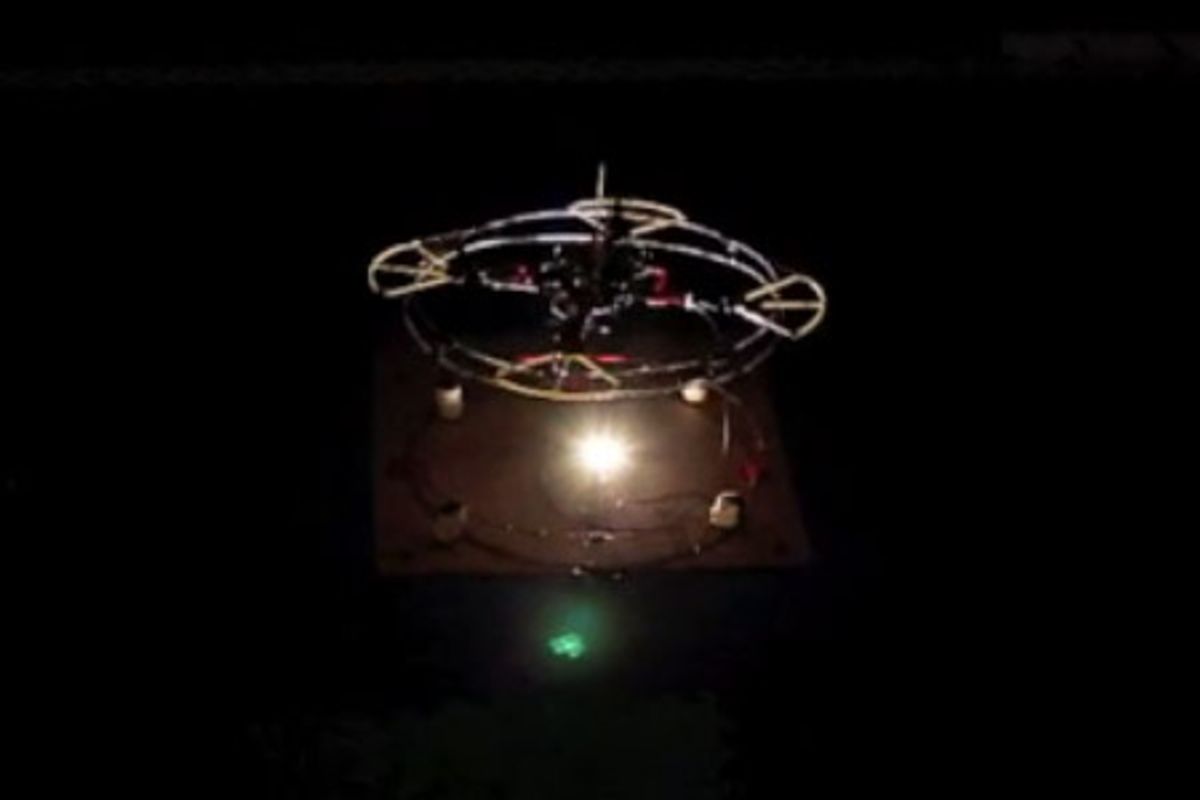Cords are terrible, horrible things. Some of you may remember back to ancient times, when everything was corded and nobody was able to leave their houses. Ever. We've come a long way since then, what with wireless communication and batteries that don't totally suck, but really, batteries do still kind of almost totally suck.
Whenever you have anything that needs to survive away from the electrical grid for an extended period of time (whether it's a cellphone or a sensor), batteries are inevitably the limiting factor, and roboticists from the NIMBUS Lab at the University of Nebraska–Lincoln have solved the problem with a quadrotor that can fly around and wirelessly charge up electronics for you.
The type of wireless power that these quadrotors are beaming out is based on what's called "strongly coupled magnetic resonances." Basically, you've got two coils of wire: one on the quadrotor, and one on whatever you want to power or charge (we'll call this the receiver). The quadrotor drives a current in its coil, which generates an oscillating magnetic field. When the quadrotor gets close enough to the receiver, the receiver's coil starts to resonate with the magnetic field transmitted by the quadrotor. That resonance induces a voltage in the coil, which the receiver can use to power its electronics or charge its battery.
Transmitter and receiver coils.
Exactly how much power gets from the quadrotor to the receiver (and how efficient the transmission is) depends largely on how well the quadrotor can keep close to the optimum transmission distance, which is about 20 centimeters away from the receiver coil. When everything works perfectly, the quadrotor can wirelessly transfer about 5.5 watts of power with an efficiency of 35 percent, which is easily enough to power a light, as the above video shows. This does of course decrease the flight time of the quadrotor, but the whole point is that it can just fly back to base and recharge itself, while stationary electronics don't have that option.
As far as applications go, the researchers suggest that this kind of system would be great for "highway messaging systems, ecological sensors located in forests, or sensors shallowly embedded underground or in concrete." UAVs would act as mobile power stations, zipping around and delivering power to sensors when necessary. Rumor has it that CyPhy Works (the stealthy startup run by iRobot co-founder Helen Greiner) is developing UAVs for infrastructure inspection, and it seems like some wireless sensor charging capability would fit right in with that sort of thing.
UAV wirelessly transferring power to light a LED.
Now, powering sensors is cool and all, but here's what I want: I want to be able to be walking around somewhere, notice that my phone is low on battery, and send a text to some special phone number that will then autonomously dispatch one of these quadrotors to my location, where it'll follow me around and wirelessly recharge my phone while it's in my pocket. This, people, is the future.
Until the future hits, the researchers will be keeping busy teaching their quadrotor to autonomously keep a stable hover at an optimum distance to transfer power to a receiver, which will involve either using something like a camera, or (more challenging but way cooler) feedback from the power transmission itself. Also, they're hoping to be able to boost the amount of power the quadrotor can transfer, and maybe toss some super capacitors into the mix to suck down more power even faster.
Resonant Wireless Power Transfer to Ground Sensors from a UAV, by Brent Griffin and Carrick Detweiler from the University of Nebraska–Lincoln, was presented this month at the 2012 IEEE International Conference on Robotics and Automation in St. Paul, Minn.
[ NIMBUS Lab ]
Tip o' the hat to Hizook.
Evan Ackerman is a senior editor at IEEE Spectrum. Since 2007, he has written over 6,000 articles on robotics and technology. He has a degree in Martian geology and is excellent at playing bagpipes.






